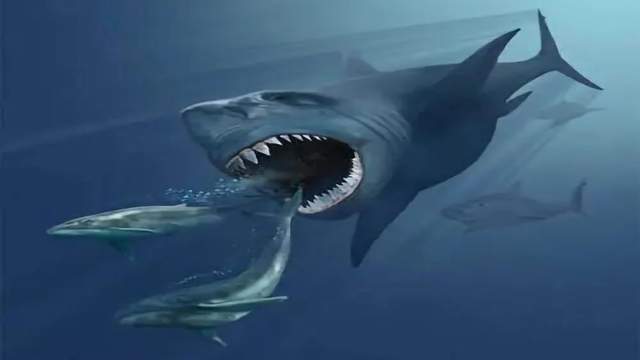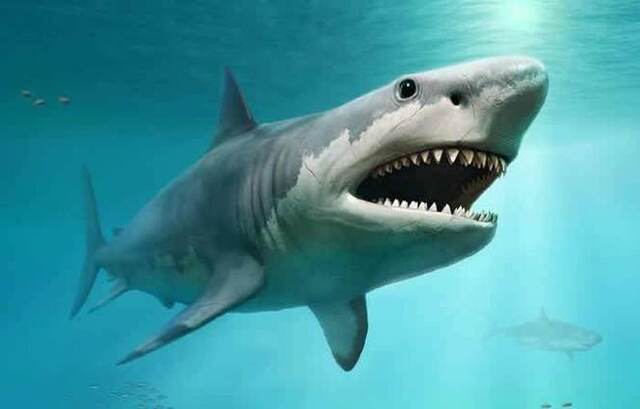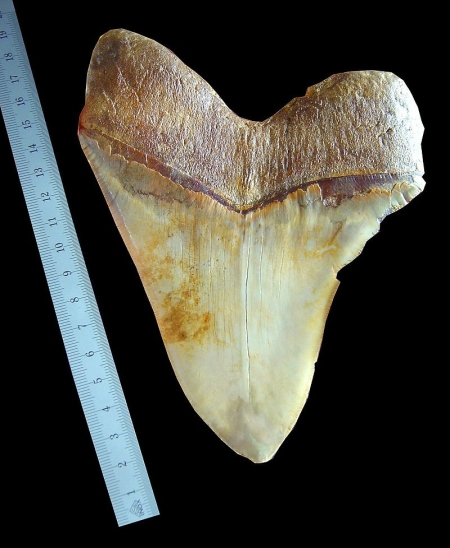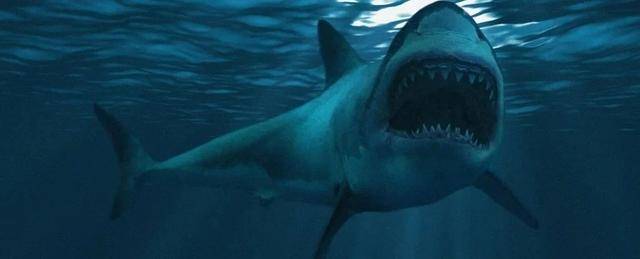Otodus megalodon
IUCN
EXBasic Information
Scientific classification
- name:Otodus megalodon
- Scientific Name:Carcharocles megalodon,Megalodon
- Outline:Carnivora
- Family:O.megalodon Otodus Otodontidae Selachimorpha
Vital signs
- length:15-25m
- Weight:60-103ton
- lifetime:88-100years
Feature
The most distinctive feature of Megalodon is its huge teeth. The largest tooth fossil found is up to 15 cm long, so it is also called "Big Tooth". It is the top marine predator with the largest volume and the strongest bite force. Its bite force is considered to be the strongest among all animals in ancient and modern times.
Distribution and Habitat
It is widely distributed and has been found in most parts of Europe, Africa, North and South America, as well as Taiwan, Puerto Rico, Cuba, Jamaica, the Canary Islands, Australia, New Zealand, Japan, Malta, the Grenadines and India; the main geographical range is between 178.32° east longitude and 122.35° west longitude and 55.28° north latitude and 43.99° south latitude.
Appearance
The body is torpedo-shaped, with a conical snout, huge pectoral and dorsal fins, and a powerful crescent-shaped tail.
Megalodon teeth are similar to those of great white sharks, but larger and thicker. The largest Megalodon tooth found has an edge of 18 cm and weighs nearly 450 grams. The smooth enamel surface has longitudinal stripes, and the edge of the tooth has many regular serrations, about 50 per 2.5 cm. The symmetrical teeth are deeply rooted in the jaw and have two roots. Unlike the tooth surface, the roots are very rough.
The Megalodon jaw morphology is typical of shark jaw morphology, with 270 to 280 teeth of 4 types, arranged in 5 rows horizontally, growing in a pair of jaws more than 2 meters wide. They have a strong bite force, and the lower jaw can crush a car.
The spinal core of the Megalodon is the size of a saucer, with a diameter of 5 to 23 cm. The vertebrae consist of two cartilaginous tubes that wrap the notochord and the notochord sheath (the predecessor o
Details

Megalodon (scientific name: Carcharocles megalodon, Otodus megalodon), also known as the giant ear-toothed shark, megalodon, scientific name comes from Greek, meaning huge teeth, is an extinct prehistoric largest shark and fish, one of the most terrifying aquatic carnivores ever to lurk in the earth's oceans. The average length of a mature adult megalodon is at least 50 feet (15 meters) and the longest may reach 82 feet (25 meters), with an average body size of 16-18 meters (the average size of male sharks is 16 meters. Female sharks are larger, with an average size of 18 meters); the heaviest megalodon weighs 103 tons, with an average weight of 60-70 tons (the average weight of male sharks is 60 tons, and the average weight of female sharks is 70 tons). The bite force of megalodon is the strongest among ancient and modern animals, with a bite force of 28-36 tons, which is more than that of Pliosaurus feng's (Pliosaurus The 15-ton bite force of the Megalodon funkei is even greater, and it can easily bite through the bones of whales. It may be one of the strongest creatures discovered in the history of the earth. It belongs to cartilaginous fish and has no exoskeleton in its body, so what remains now are basically teeth. Its body is torpedo-shaped, with a conical snout, huge pectoral and dorsal fins, and a powerful crescent-shaped tail. According to a study to be published in the journal Historical Biology, megalodon not only gave birth to the largest shark babies in the world, but they achieved this size by engaging in a practice called oophagy - shark embryos will eat their undeveloped brothers and sisters.
The origin of the Otodontidae family, to which the megalodon belongs, can be traced back to the Cretaceous period (about 145 million to 66 million years ago). The earliest megalodon fossils discovered appeared in the late Oligocene (about 28 million years ago). Throughout the Miocene, according to the fossil records of the middle Miocene (about 15.9 million years ago), megalodon was mainly distributed in the western Atlantic, Mediterranean and Caribbean Seas in the Northern Hemisphere, and only a small number of fossil records were found in Australia in the Southern Hemisphere. By the late Miocene, its distribution range had expanded to its maximum coverage. In addition to the central eastern Pacific, western Atlantic, eastern Atlantic, Mediterranean, Indian Ocean and Caribbean Sea, it was also distributed along the coast of America (from California to Chile, and Florida to Argentina), Europe, southern Africa, New Zealand and some areas of Japan. However, as the global temperature turned cold in the Pliocene, marking the beginning of the Ice Age, the population of megalodon gradually decreased, and megalodon became extinct at the end of the Pliocene (about 2.6 million years ago).
The fossil record of megalodon teeth shows that the number of serrations on its teeth gradually increased during its evolution. At the same time, the crown of the tooth became wider and more triangular in shape, while the lateral tooth tip gradually disappeared. The evolution of tooth morphology may reflect the process of the megalodon's predation strategy changing from biting to cutting. This shift may be related to the change in prey selection, from fish to whales. It constantly renews its teeth, which also provides scientists with a large number of megalodon tooth fossils. However, over the long years, most of their trunk skeleton fossils have long been reduced to ashes. Therefore, people have always known very little about their reproduction methods and individual growth patterns.
Megalodon is only a creature inferred from tooth fossils and some vertebrae fossils. Similar to other modern sharks, its skeleton is cartilage rather than hard bone, resulting in a lack of skeletal fossil records. However, megalodon has more than 100 large, hard enamel teeth that have been preserved for a long time. These teeth are similar to those of great white sharks and are about 21 cm long (bevel length). Megalodon has more than 250 teeth up to 20 cm long. These teeth have sharp serrated edges.
Megalodon teeth have been excavated and used by people since ancient times. Because of their large size and serrated blades, they have become precious artifacts in the pre-Columbian culture of the Americas and have been processed into projectile points, knives, jewelry and funeral accessories.
Sharks are different from other fishes. Sharks do not have swim bladders. First, they rely on the large amount of oil contained in their huge livers, which can be up to one-third of their body volume, to maintain part of their buoyancy. Second, they rely on the movement of their pectoral fins to maintain buoyancy. "There is no air in sharks, so there is no 'explosion'." Researchers from Chicago and New Jersey pointed out that megalodon baby sharks, like modern lamniform sharks, are likely to feed on unhatched eggs in the womb in order to grow. This would certainly lead to a decrease in the number of sharks, but the sharks that survived this deadly sibling competition were all huge - larger than an adult human. Using CT scanning technology (a process that uses multiple X-rays to reconstruct a 3D structure) on the vertebral fossils stored at the Royal Belgian Institute of Natural Sciences in Brussels, the team was able to reverse calculate the approximate length of the megalodon's body when it was born - the results showed that it was about 6.6 feet long (2 The study was also able to determine that the shark grows an average of 6.3 inches (16 cm) per year in the first half century of its life, and the growth curve model shows that this shark has a lifespan of 88-100 years.

Morphological characteristics
The Megalodon is the largest known fish, with a mature adult reaching 50 feet (15 meters) or up to 82 feet (25 meters); weighing between 60-70 tons, with females being longer and heavier than males. Its appearance is similar to that of the great white shark, with a torpedo-shaped body, a conical snout, huge pectoral and dorsal fins, and a powerful crescent-shaped tail.
The teeth of the Megalodon are similar to those of the great white shark, but are larger and thicker. The largest Megalodon tooth discovered has an edge of 18 cm, The weight is close to 450 grams. The smooth enamel surface has longitudinal stripes, and there are many regular serrations on the edges of the teeth, about 50 per 2.5 cm. The symmetrical teeth are deeply rooted in the jaw and have two roots. Unlike the tooth surface, the roots are very rough.
The megalodon jaw morphology is a typical shark jaw morphology, with 4 types of teeth totaling 270 to 280, arranged in 5 rows horizontally, growing in a pair of jaws more than 2 meters wide. They have a strong bite force, and the lower jaw can crush a car.
The megalodon's vertebral center is the size of a saucer, with a diameter of 5 to 23 cm. The vertebrae include two cartilaginous tubes that wrap the notochord and the notochord sheath (the predecessor of the spine).
Distribution range
Megalodon is widely distributed in Europe, Africa, Found in most of North and South America, as well as Puerto Rico, Cuba, Jamaica, the Canary Islands, Australia, New Zealand, Japan, Malta, the Grenadines, and India; the main geographical range is between 178.32°E and 122.35°W, and between 55.28°N and 43.99°S.
Habits
Foraging behavior
Megalodon is a carnivore and the largest marine predator in history. A calcium isotope study of extinct and extant cartilaginous fish and rays showed that Megalodon had a higher nutritional level in the food chain than the contemporary great white shark. As an opportunistic predator, Megalodon mainly preyed on fish, baleen whales (Balaenoptera), toothed whales (ancestors of modern sperm whales Physeter macrocephalus, dolphins Delphinidae, killer whales Orcinus orca), Sirenia (such as Dugong dugon, Trichechu), and seals (Phocidae).
Megalodon adopted a strategy of attacking prey from above, below, or behind, using its fast swimming ability to hunt over short distances. Deep cracks in the fossils of its prey indicate that its attack methods varied depending on the prey. When facing medium-sized dolphins and similar-sized fish, the attack focused on biting bones and causing devastating damage to vital organs. But when hunting huge whales, megalodon seems to try to tear and bite off the opponent's flippers to incapacitate the prey before feeding; after inflicting one or more fatal bites, they would wait for the prey to die before tearing it apart and eating it.
Competitive behavior
Megalodon lived in a highly competitive environment, and its position at the top of the marine food chain may have had a significant impact on the structure of marine ecosystems. The fossil record shows that the emergence and diversification of megalodon is correlated with the emergence of cetaceans and other marine mammals. Juvenile megalodon prefers to live in areas where small cetaceans are abundant, while adults prefer to live in areas where large cetaceans are abundant. This preference may have developed in the early Oligocene, and may have been due to the fact that young megalodon were more vulnerable to attacks from other large predatory sharks, such as the great hammerhead shark (Sphyrna mokarran). In areas where the ranges of great white sharks and megalodon overlapped, such as California during the Pliocene, the two would have occupied the area at different times of the year and would not have coexisted at the same time.

Thermoregulation
Megalodon is thought to have regulated its body temperature in a manner similar to that of modern great white sharks, making it less than completely cold-blooded like most fish. Similar to the great white shark, megalodon generated heat through the contraction of its swimming muscles, which raised the temperature of parts of the shark's body to a temperature higher than that of the surrounding water. This adaptation is called regional endothermy and is a characteristic of warm-blooded animals. This adaptation may have allowed megalodon to swim and hunt in colder waters, allowing it to hunt prey alone in these places.
Growth and reproduction
Reproduction method
There are currently two views on the reproduction method of megalodon: viviparity and ovoviviparity. One view is that megalodon is a viviparous species, where the young sharks obtain nutrition through the umbilical cord in the mother shark's body and grow and develop there until maturity. Another view is that megalodon is an ovoviviparous species, that is, the eggs are hatched in the mother shark's body, but the young sharks are not connected to the mother shark through the umbilical cord, but obtain nutrition by consuming yolk. Megalodon usually chooses specific locations to lay eggs and give birth to young sharks there. These locations are usually also the places where young sharks live and hunt, which helps young sharks grow smoothly and avoid other more powerful predators.
Growth characteristics
Newborn baby megalodon is about 3.5 meters long, and its growth rate is about twice that of the existing great white shark. According to a 2010 study, the slowing down or cessation of somatic cell growth of megalodon occurs at around 25 years old, indicating that the sexual maturity of this species is extremely delayed. According to the annual rings on the megalodon vertebrae, a mature individual of 15-meter-long megalodon can live to 88 to 100 years old.

Extinction history
The extinction began in the late Miocene (about 5 million years ago). As the global temperature dropped and entered the ice age, the ecosystem was affected, and the population of megalodon, which preferred warm water environment, decreased. The tectonic movement caused the Panama region to rise, and South America and North America were connected, but it cut off the connection between the Pacific and Atlantic Oceans, causing great changes in deep ocean currents. Correspondingly, the earth's climate also changed significantly. The earth cooled, and the glaciation caused the sea level to drop, the foreshore habitat became less, and the megalodon nursery area was destroyed.
At the same time, the changes in seawater currents made food scarce. Megalodon mainly relied on whales as food. Because the water at the poles became cold and unsuitable for megalodon to survive, whales could escape the hunting of megalodon. At the same time, the number of whales decreased significantly, causing megalodon to lack food and become extinct. As a top predator, megalodon had difficulty obtaining enough food. In addition, whales also produced various large and fast carnivorous species during evolution, which formed a direct competition with megalodon. In particular, the killer whales that appeared more than 2 million years ago, which were highly intelligent and good at teamwork, may have brought great survival pressure to the megalodon. Other explanations point out that any impact on the food chain will eliminate predators with huge metabolic needs. It became extinct about 2.6 million years ago, and its hegemony on the earth that lasted for 14 million years came to an end.
Astronomers speculate that a supernova event that occurred in the local bubble 2.6 million years ago may be related to the extinction of the megalodon. This event occurred at the boundary between the Pliocene and the Pleistocene. It was a megafauna mass extinction event, and it is estimated that about 36% of the species (genera) were extinct.
Megalodon is not rare, it is distributed all over the world. So has China found megalodon fossils? So far, megalodon tooth fossils have only been found in Taiwan, my country: in Kaohsiung, about 6 million years ago, scientists have repeatedly found megalodon tooth fossils, which can be more than 10 cm in size.
The deepest megalodon tooth: In June 2022, a long-extinct megalodon tooth fossil was collected from the Pacific Ocean floor at a depth of 3,089 meters. (Guinness World Records)








